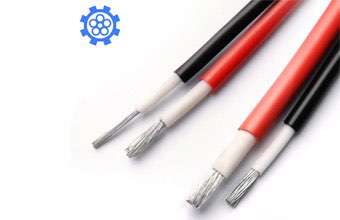 Author: Joey Wan
Author: Joey Wan  February 10,2022
February 10,2022
In the solar photovoltaic power generation system, the construction cost of photovoltaic cables is generally relatively large, and the choice of laying method directly affects the construction cost. Therefore, how to correctly choose the most cost-effective photovoltaic cable laying method and achieve reasonable planning and layout is more important. one ring.
In general, the laying method of solar power extension cord should comprehensively consider factors such as cable specifications, quantity, engineering conditions, and laying environment, and choose according to the principles of reliable operation, convenient maintenance, and reasonable technology and economy.

The laying of DC solar power extension cord in photovoltaic power generation projects mainly includes laying through pipes, laying in grooves, laying in cable trenches, laying in tunnels, laying directly buried in sand, laying bricks, etc. The laying of AC solar pv cable is similar to the laying of DC photovoltaic cables, and is generally used in power systems.
Solar power extension cords are generally used for the connection between photovoltaic modules. The cables require a small cross-sectional area and can carry a large voltage, usually up to 1500V. The cables are bundled with the component brackets or directly buried through pipes. Generally, the following points need to be considered when laying:
1. When laying cables, the connecting cables between photovoltaic modules or the connection between various components and solar power extension cords, and solar pv cable should use component brackets as channel support and fixation as much as possible, which can reduce the impact of environmental factors to a certain extent.
2. When laying solar power extension cords, the workman should use even force and not be too tight. Generally, the site of a photovoltaic power station is open in the open air, and the temperature difference between day and night is very large. It is well known that photovoltaic cables should be prevented from thermal expansion and contraction.
3. For the photovoltaic cable leads on the building surface, the overall appearance of the building should be considered. The laying position should avoid laying the cable on the sharp edges of walls and brackets, so as not to cut or wear the insulation layer of the photovoltaic cable and cause damage, or cut off the wire due to excessive shearing force. cause quality problems. At the same time, it is also necessary to consider whether the cable line is safe or not.
4. Before planning to build a solar photovoltaic power station, plan the laying path of photovoltaic cables reasonably, reduce the intersection of photovoltaic cables, and lay as much as possible in combination with the site conditions, so as to reduce the amount of earthwork excavation and the number and cost of photovoltaic cables used in the construction process.
5. It is thought that most photovoltaic cables are laid outdoors. Generally, the cable joints connected to solar energy can use protective tubes, and use component brackets as channels for fixed laying.
The construction of photovoltaic power stations requires relatively high consumption costs, and the laying lines of solar power extension cords are particularly complicated. Combined with the site, planning the laying method of photovoltaic cables will reduce a lot of costs and the durability of solar photovoltaic power stations.
